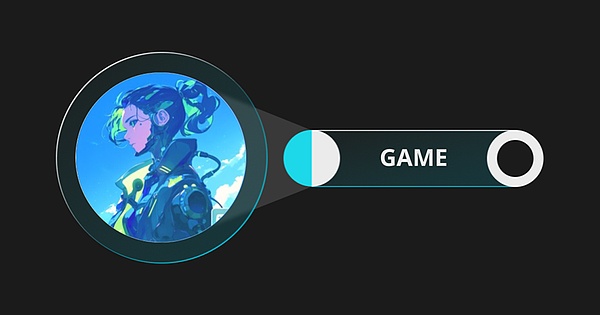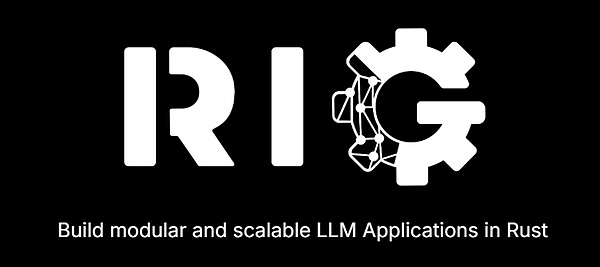Source: Blockchain Knight
In early 2025, the Crypto industry ushered in a wave of social platform automation, and the AI agent framework was undoubtedly the key driving force behind the scenes. From automatically managing social content to generating personalized NFTs, these technologies are redefining the way users interact with blockchain.
This article will explore in depth how the six major AI agent frameworks - ElizaOS, G.A.M.E, ARC, ZEREBRO, REI and Swarms, can seize the initiative in this wave of Crypto industry boom with their unique technical advantages, and what are the latest developments of these teams after the hype, and where will they go in the future?
1. ElizaOS
Project Introduction:
ElizaOS is an open source framework designed to create, deploy, and manage autonomous AI agents. Built with TypeScript, it provides a modular, extensible platform that enables developers to build intelligent agents that can interact on multiple platforms (such as Discord, Twitter, Telegram) while maintaining consistent personality and knowledge.
Technical advantages:
The design based on TypeScript reduces the learning curve for developers. Compared with frameworks using Rust (such as ARC) or Python (such as ZEREBRO), it is easier to get started quickly, and the ecosystem maturity and developer adoption rate are higher.
Number of Github stars:
14.7K
https://github.com/elizaOS/eliza
Latest development:
Core function and design concept update: The documents and white papers released in January this year emphasized the five core components of ElizaOS: Agents, Character files, and more. Files), Providers, Actions, and Evaluators form a powerful, controllable framework tailored for Web3.
Integration with Sei Network: ElizaOS recently integrated with Sei Network, which is hailed as one of the fastest blockchains, enabling AI agents to run autonomously on Sei to perform tasks such as Crypto trading and asset management.
ElizaOS v0.25.8 version released: ElizaOS has just released its latest version v0.25.8. This update reduces redundancy and simplifies the installation process by removing all plugins from the main repository - a big improvement to the user experience. New features include support for more large language models (LLMs), such as those from NEAR AI and Secret Network, and a dynamic plugin system for enhanced flexibility.
Future Expectations:
With the successful implementation of plugin separation and multi-model support in version v0.25.8, future versions of ElizaOS may introduce more powerful cross-chain compatibility, not limited to existing integrations, to support more complex financial, gaming, and social use cases. Its open source nature and community-driven plugin ecosystem are expected to promote this process, and developers may contribute more field-specific toolkits, such as 3D content generation for the metaverse or dedicated agents for decentralized identity management.
In terms of functionality, ElizaOS may deepen its multimodal capabilities, integrate text, image, and audio processing more seamlessly, and may even launch a native AI-driven real-time decision engine suitable for scenarios such as supply chain management or dynamic NFT markets.
2. G.A.M.E
Project Introduction:
G.A.M.E is an AI agent framework developed by Virtuals Protocol, a decentralized network based on Base. It is committed to enabling autonomous AI agents to run on multiple platforms and integrate with blockchain technology to create a tokenized, agent-driven economic system. G.A.M.E has attracted attention for its convenient SDK (software development kit) and extended agent capabilities, contributing to the Virtuals ecosystem, which has a total market value of US$6 billion and supports multiple high-value AI agent projects.

Technical advantages:
Provides a low-code toolkit, suitable for non-technical users to quickly deploy agents. Compared with frameworks that require programming skills (such as ElizaOS or ARC), G.A.M.E. significantly lowers the threshold for use.
Number of Github stars:
131
https://github.com/Virtual-Protocol/virtuals-python
Latest Developments:
Virtuals Ecosystem Buyback and Destruction Plan: Virtuals Protocol announced a buyback and destruction plan in mid-January, which had a significant impact on the G.A.M.E framework. Virtuals used 13 million VIRTUAL tokens ($11.7 million) to buy back and burn 25 AI agent tokens, including 1.6 million GAME tokens. GOAT SDK Integration: In mid-to-late January, G.A.M.E announced an integration with the GOAT SDK, unlocking “over 200 on-chain actions” for G.A.M.E agents. The collaboration was described as “game-changing” and enhanced the blockchain interactivity of the agents. DeepSeek Integration: In mid-February, G.A.M.E announced the integration of the high-performance large-scale language model DeepSeek into the G.A.M.E framework. The addition of DeepSeek improves the reasoning and conversation capabilities of G.A.M.E agents, an upgrade that may improve the ability of agents to handle complex tasks across platforms and become a key differentiating advantage for G.A.M.E.
Multi-platform autonomy upgrade: In mid-to-late February, G.A.M.E released a major upgrade to its SDK, giving AI agents the ability to run autonomously on X, Discord, Telegram, and Farcaster, making it more than just a plug-in, but with true multi-platform autonomy. This update leaps from a static plug-in to dynamic cross-platform agent coordination - for example, an agent can start a task on Telegram and complete it on Discord.
Future Expectations:
Based on the amazing growth of its SDK in the past three months, future versions may further optimize the development experience and launch more powerful tool sets, such as built-in smart contract templates or real-time data analysis modules. On a technical level, G.A.M.E. may deepen its multi-platform autonomy capabilities, beyond the current X, Discord, Telegram, and Farcaster integrations, to a wider range of decentralized social networks. In addition, the continued integration of high-performance language models such as DeepSeek may drive breakthroughs in natural language processing and decision reasoning for G.A.M.E agents, making them suitable for a wider range of scenarios, such as automated customer support or on-chain governance.
3. ARC (RIG)
Project Introduction:
RIG is an open source AI agent framework developed by ARC and written in Rust. It aims to simplify the creation of autonomous AI agents by providing a modular architecture, supporting multiple large language models (LLMs), vector databases for memory management, and scalable tool integration.

Technical advantages:
Based on Rust's memory safety and zero-cost abstraction features, RIG performs well in resource-intensive tasks and is more suitable for enterprise-level applications.
Number of Github Stars:
3.1K
https://github.com/0xPlaygrounds/rig
Latest Development:
GitHub Repository Launch and Documentation: RIG’s official GitHub repository was made public in late December, with the release coming with basic documentation outlining installation instructions, supported models, and a simple “Hello World” agent example.
Support for mainstream models and tools: In January this year, RIG consolidated its support for mainstream LLM, and tool support includes standard utilities (such as web crawling, file I/O), etc.
Agent Launchpad FORGE: In mid-February, ARC launched "ARC FORGE", a Launchpad for agent-driven tokens, and announced its first project AskJimmy, an AI-driven trading platform. FORGE uses the RIG framework to enable AI agents to manage token issuance and integrate with blockchain for decentralized transactions.
Future Expectations:
Although RIG's Rust features limit the entry of beginners, its high performance and security will attract professional developers, especially in scenarios that require low latency and high throughput, such as GameFi or DeFi protocols. In the future, ARC may reduce the learning curve through richer documentation, tutorials, and pre-built templates, and accelerate the development of the community plug-in ecosystem, such as dedicated adapters for Solana or Base blockchains.
Fourth, ZEREBRO (ZerePy)
Project Introduction:
ZerePy is a Python framework developed based on Zerebro's backend technology. It was launched by the Zerebro team in cooperation with ai16z and is known as "the first Python-based AI agent framework in the Crypto field." ZerePy extracts the core functions of Zerebro (such as content generation and social platform interaction) and encapsulates them into a tool set that developers can use directly.

Technical advantages:
The ZerePy framework excels in art generation (such as NFT, music). Compared with more general frameworks, it is unique in the fields of entertainment and social media, and its Python-based architecture is very friendly to AI/ML developers.
Number of Github Stars:
553
https://github.com/blorm-network/ZerePy
Latest Developments:
Increased community interest: Early adoption focused on lightweight applications (e.g., X automation, content creation), and ZerePy's Python foundation attracted a wider audience than Rust or TypeScript frameworks.
TEE in ZerePy: In mid-to-late January, ZerePy was upgraded to run in a Trusted Execution Environment (TEE) for secure cloud deployments.
Future Expectations:
ZerePy's Python foundation provides it with broad community support and ecological compatibility, and is expected to become the tool of choice for Python developers to build Web3-driven AI agents, especially in the fields of social media automation and decentralized creative applications. Within the Zerebro ecosystem, the development of ZerePy may be deeply bound to the Zentients Launchpad to support the incubation and deployment of several new agent projects.
V. REI
Project Introduction:
REI is an AI agent framework that aims to bridge the gap between AI and blockchain and solve technical incompatibility issues such as computing resource conflicts and data structure mismatches. REI adopts a modular architecture and uses the "Oracle Bridge" to connect on-chain and off-chain data, enabling AI agents to perform real-time analysis and decision-making in a decentralized environment.

Technical advantages:
Focusing on complex distributed architecture design, it is more suitable for developers who need advanced customization than simple and easy-to-use frameworks (such as G.A.M.E).
Number of Github stars:
No public link
Latest Development:
Integration with Base blockchain: In early January, REI integrated with Base to improve scalability and reduce gas costs. Base’s low-cost, high-throughput environment complements REI’s resource-intensive AI operations. Oracle bridges connect Base’s on-chain data to off-chain AI reasoning, enabling agents to adjust DeFi parameters (such as liquidity pool ratios) in real time.
Dynamic NFT Use Case Demonstration: In mid-to-late January, a demonstration at X showed that the REI agent was able to dynamically update NFT properties based on on-chain activities (such as a user's transaction history), highlighting the practicality of REI.
Future Expectations:
Based on its current oracle bridge and modular agent system, future versions may further optimize on-chain-off-chain coordination efficiency, such as by integrating more efficient zero-knowledge proofs (ZKP) or trusted execution environments (TEEs) to enhance privacy protection and computing speed. This will enable REI agents to handle more complex workloads, such as dynamic risk management of large-scale DeFi protocols or real-time supply chain optimization. With the successful integration with the Base chain, REI may further cooperate with Layer2 ecosystems (such as Arbitrum or Optimism) to take advantage of low-cost and high-throughput environments to promote the implementation of enterprise-level applications.
Six, Swarms
Project Introduction:
Swarms is an open source framework for coordinating multiple AI agents, emphasizing modularity, scalability, and lightweight design. Unlike a single agent system, Swarms implements distributed task execution, and specialized agents collaborate to solve problems - for example, one agent analyzes data, another executes transactions, and a third manages outputs.
Technical advantages:
It focuses on the collaboration of agent groups and simulates the collective intelligence of nature (such as bee colonies). Compared with frameworks based on a single agent (such as ZEREBRO or G.A.M.E.), it is more efficient in handling complex tasks.
Number of Github stars:
18.9K
https://github.com/openai/swarm
Latest development:
Marketplace launch on Swarms platform: Last December, Swarms launched a marketplace that allows developers to discover and monetize agents, tools, and prompt words. The marketplace is integrated with the Swarms SDK, and developers can deploy agents (for example, for trading or content generation) and earn SWARMS. It supports interactions between agents, forming groups that adapt and improve over time, similar to natural ecosystems.
Swarms 7.2.6 version released: In mid-to-late February, Swarms 7.2.6 version was released, highlighting multiple bug fixes and new features. This update enhances agent collaboration through roles and improved group architectures such as RoundRobin, GroupChat, ConcurrentWorkflow, and AgentRearrange.
Proxy and Multi-Proxy APIs: Swarms recently launched proxy and multi-proxy APIs to simplify the integration of group architectures (such as Concurrent, Sequential, HierarchicalSwarm, RoundRobin). These managed APIs will support multiple models and enhance application development capabilities.
Future Expectations:
Swarms' open source nature and upcoming proxy and multi-proxy APIs indicate that its developer ecosystem will expand rapidly. In the future, its SDK may fully support cross-platform deployment, leveraging its lightweight design and fault-tolerant mechanism (automatic adaptation after proxy failure) to achieve seamless multi-chain operations. In addition, with the improvement of the memory system, Swarms agents may have long-term contextual memory to support task planning across time dimensions. In terms of community and market impact, its openness and Solana's low-cost advantages will attract more developers, especially in the fields of DeFi and GameFi.
Summary
With low-code development, high-performance architecture, multimodal capabilities, and seamless integration with blockchain, these AI agent frameworks have successfully responded to the market's demand for efficiency, creativity, and practicality.
Looking to the future, with the popularization of high-performance language models, the maturity of high-throughput blockchains, and the further expansion of the tokenized economy, these frameworks are expected to break through existing boundaries, develop stronger cross-chain compatibility, privacy protection mechanisms, and long-term task planning capabilities, and promote the deep integration of Web3 in social, gaming, finance, and even real-world applications.
Compared to the development path of traditional AI agents, these agent frameworks rooted in the Web3 direction still have a long way to go. After the hype period, these agent development teams need to focus more on development and commercial expansion in order to usher in the next outbreak.
 Alex
Alex
 Alex
Alex Alex
Alex Catherine
Catherine Kikyo
Kikyo Weatherly
Weatherly Catherine
Catherine Anais
Anais Kikyo
Kikyo Weatherly
Weatherly Catherine
Catherine